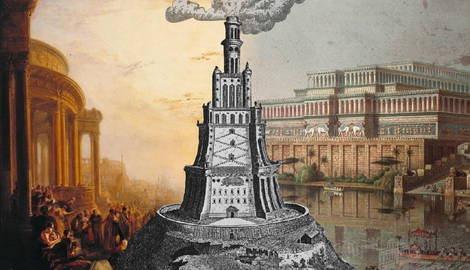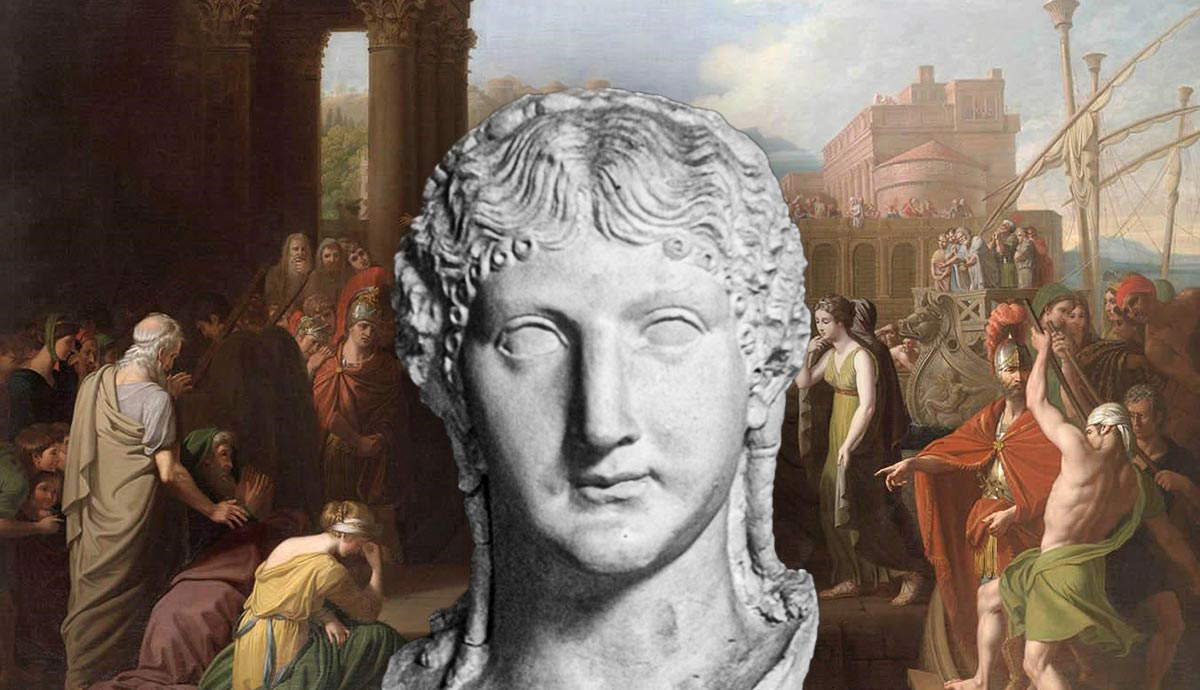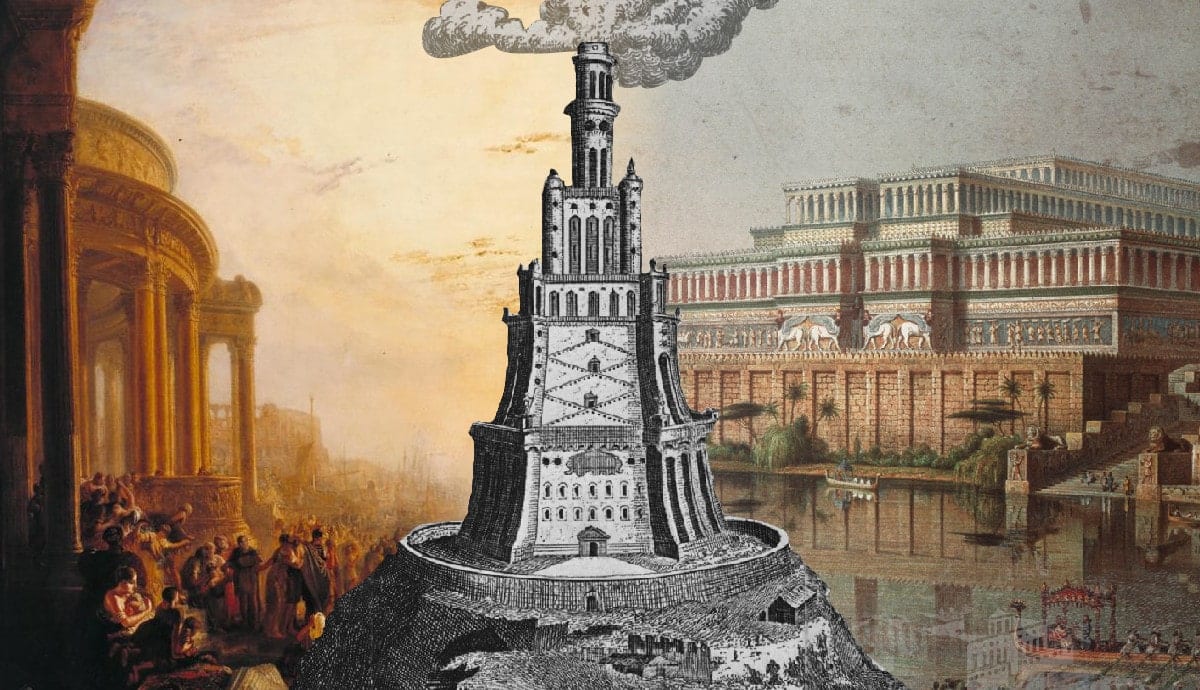
The ancient civilizations of the classical world inspire admiration, whether we think of the elaborate monuments of ancient Egypt, the academic achievements of classical Greece, or the domination of the Roman Empire. These ancient civilizations enabled the creation of incredible cities, with palaces, temples, and monuments to public entertainment built on the wealth of expansive empires. The richness, vibrancy, and cosmopolitan lifestyle of these cities would put many modern cities to shame. Read on to discover ten of the greatest ancient cities from the classical world.
1. Memphis: Ancient Egypt’s First Capital

One of Egypt’s oldest and most important ancient cities, Memphis, was the capital of the Old Kingdom (2635-2130 BCE), where the pharaohs built their pyramids. Memphis occupied a prominent position where the Nile River opens into the Delta, so Menes founded it around 3100 BCE to rule the newly unified Upper and Lower Egypt. Memphis was one of several major cities expanded by the great Pharaoh Ramesses II in the 13th Century BCE. The most important monument in the city was the temple of the city’s patron deity, Ptah.
Although superseded as the capital during the First Intermediate Period, it remained important throughout Egyptian history. When the Assyrians invaded Egypt in 671 BCE, Memphis was razed to the ground twice. But the city was rapidly rebuilt due to its religious importance. In 525 BCE, the Achaemenid Persian king Cambyses II captured Memphis, which became the capital of the Persian satrapy of Egypt.

In 331 BCE, Alexander the Great was crowned Pharaoh at Memphis after seizing Egypt from the Persians. After he died, Alexander was briefly entombed at Memphis, and one of his commanders, Ptolemy, established the Ptolemaic Dynasty. But the Ptolemies then moved their capital to the new Delta city of Alexandria, which permanently shifted power further north. In 196 BCE, Ptolemy V issued a decree, which was transcribed onto a tablet in three languages by scribes at Memphis. This was the Rosetta Stone, one of the most important archaeological discoveries in human history.
2. Thebes: Home of the Great Pharaohs

Thebes replaced Memphis as the capital of ancient Egypt during most of the Middle Kingdom and New Kingdom. It had been important since early times as the city of the god Amun. It was around 2055 BCE that a Theban aristocrat named Mentuhotep II took power ad moved the capital to Thebes. He significantly increased the grandeur of the city, which became home to the massive Temple of Karnak. Thebes was displaced as the capital by the controversial Pharaoh Akhenaten in 1345 BCE, but was restored by his famous son Tutankhamun.

As some of Egypt’s greatest Pharaohs ruled from Thebes, a vast necropolis began to form on the western bank of the Nile, known as the Valley of the Kings. The mortuary complexes included those of Ramesses II as well as the huge mausoleum of Queen Hatshepsut. The city itself hugged the eastern bank, becoming famous for its beautiful buildings and temples. At its height, Thebes was probably home to around 80,000 people.
Thebes was sacked by the Assyrian king Ashurbanipal in 663 BCE during his invasion of Egypt. He had the city rebuilt, and it continued to be one of Egypt’s most important cities. But in the 1st century CE, the Romans arrived and destroyed Thebes, leaving the once-great city a ruined husk.
3. Nineveh: Assyria’s Palatial Capital
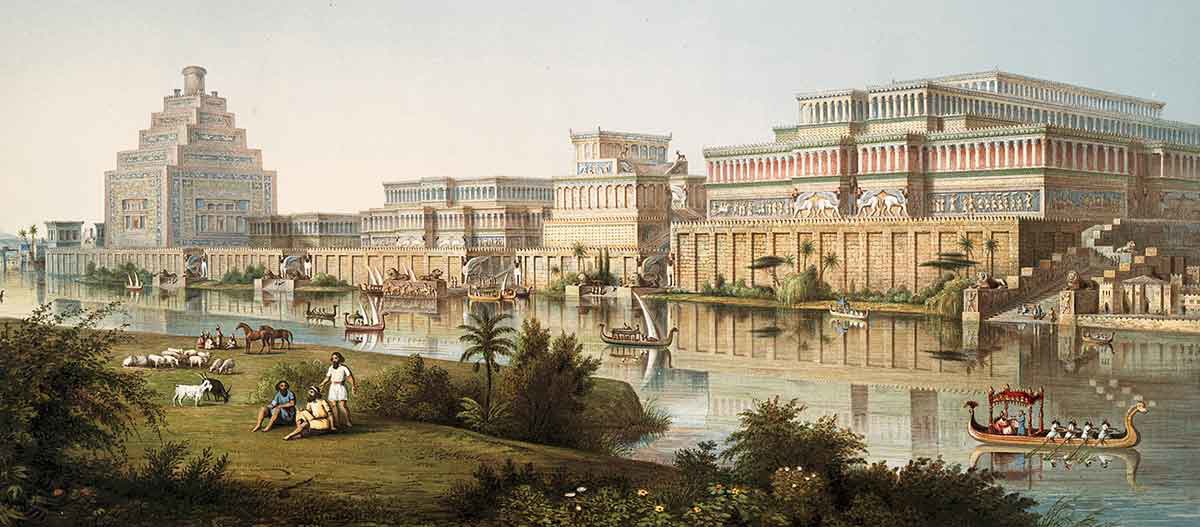
Under the Neo-Assyrian empire, Nineveh became one of the most famous ancient cities in Mesopotamia. During the early periods of Assyrian rule, the city sprawled across the east bank of the River Tigris and was a wealthy, important urban center. King Sennacherib made Nineveh the Assyrian capital in 705 BCE and expanded the city. Fifteen monumental, fortified gates were built to protect the city, which also boasted advanced infrastructure such as aqueducts. As the empire reached its peak, wealth and slaves flooded into Nineveh.
But it was Sennacherib’s most ambitious project that most epitomized the grandeur of the capital: the “Palace Without Rival”, also known as the Southwest Palace. Each of the palace’s 80 rooms was decorated with intricate carvings depicting Sennacherib’s triumphs and scenes illustrating Assyrian life. Statues of winged lions with human heads, known as “lamassu”, guarded the palace’s doorways.

Sennacherib’s grandson, Ashurbanipal, devoted even more attention to the city. He built an immense library complex, where he hoped to collate writings from across Mesopotamia. Ashurbanipal’s collection may have boasted as many as 30,000 clay tablets. Scholars were sent to scour Assyrian lands, collecting various cuneiform texts for the library. But after Ashurbanipal’s death, Assyria’s brutally oppressed subjects seized their chance for revenge. A coalition of Babylonians, Medes, and Persians destroyed Nineveh in 612 BCE. Most of the survivors were massacred, and the city was torched, bringing an end to Assyrian rule.
4. Babylon: The Jewel of Mesopotamia

Straddling both banks of the Euphrates, Babylon was already legendary in ancient times. After centuries of harsh rule under the Assyrians, Babylon led a coalition that overthrew their brutal rulers in 612 BCE. This heralded a golden age that saw Babylon’s greatest architect, Nebuchadnezzar II, turn the city into an almost mythical metropolis. At its height, three square miles of urban sprawl was believed to be contained within Babylon’s monumental walls. Nebuchadnezzar expanded these mighty fortifications and constructed the famous Ishtar Gate, a vibrant portal made from dazzling blue tiles.
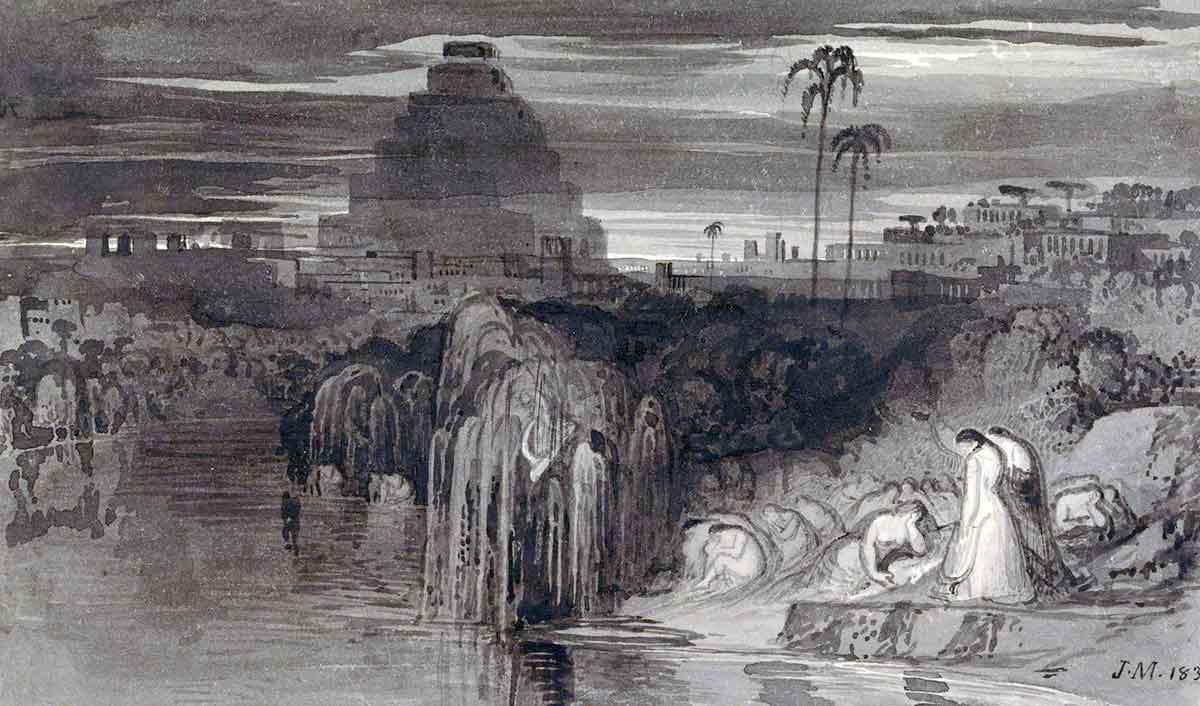
The Hanging Gardens, one of the Seven Wonders of the Ancient World, are also believed to have been built during Nebuchadnezzar’s reign. Babylon’s mighty central ziggurat, the temple of the city’s patron god Marduk, may have inspired the Bible’s Tower of Babel.
The city also hosted the raucous Akitu New Year festival every year to honor Marduk. The Persian ruler Cyrus the Great used the celebration as a distraction to conquer the city in 539 BCE, but allowed Babylon to retain its prestige and treated the city with admiration. However, Xerxes I was not so respectful, razing Babylon in 485 BCE as punishment for revolting against him. Some 150 years later, Alexander the Great brought the Achaemenid Empire to its knees and declared that Babylon was not to be harmed. The ancient city’s mystique outlived its physical presence.
5. Athens: The Birthplace of Western Civilization

Athens is often called the birthplace of Western culture, as it was the home of democracy and Greece’s greatest philosophers. After being ruled by aristocrats and tyrants for centuries, the Athenians revolted in 510 BCE. The statesman Cleisthenes established the world’s earliest-known democracy. All free men of Athens had a say in the government of the city. The father of Western philosophy, Socrates, taught his students to question everything. He was forced to take poison after being accused of corrupting the city’s youth. But Socrates’ ideas endured through his pupil, Plato, and students of philosophy were attracted to the city for centuries.
Xerxes I razed Athens twice during his invasion of Greece in 480 BCE, but was defeated by an alliance of Greek city-states led by Athens and Sparta. The great statesman Pericles then oversaw a grand rebuilding of the Acropolis on the rocky plateau overlooking the city, including the Parthenon, an impressive temple dedicated to Athena. The center of Athens was the Agora, a civic square and marketplace. Commodities such as silver, wine, and olives were abundant in Attica’s surrounding lands and powered Athens’ rise to prominence.
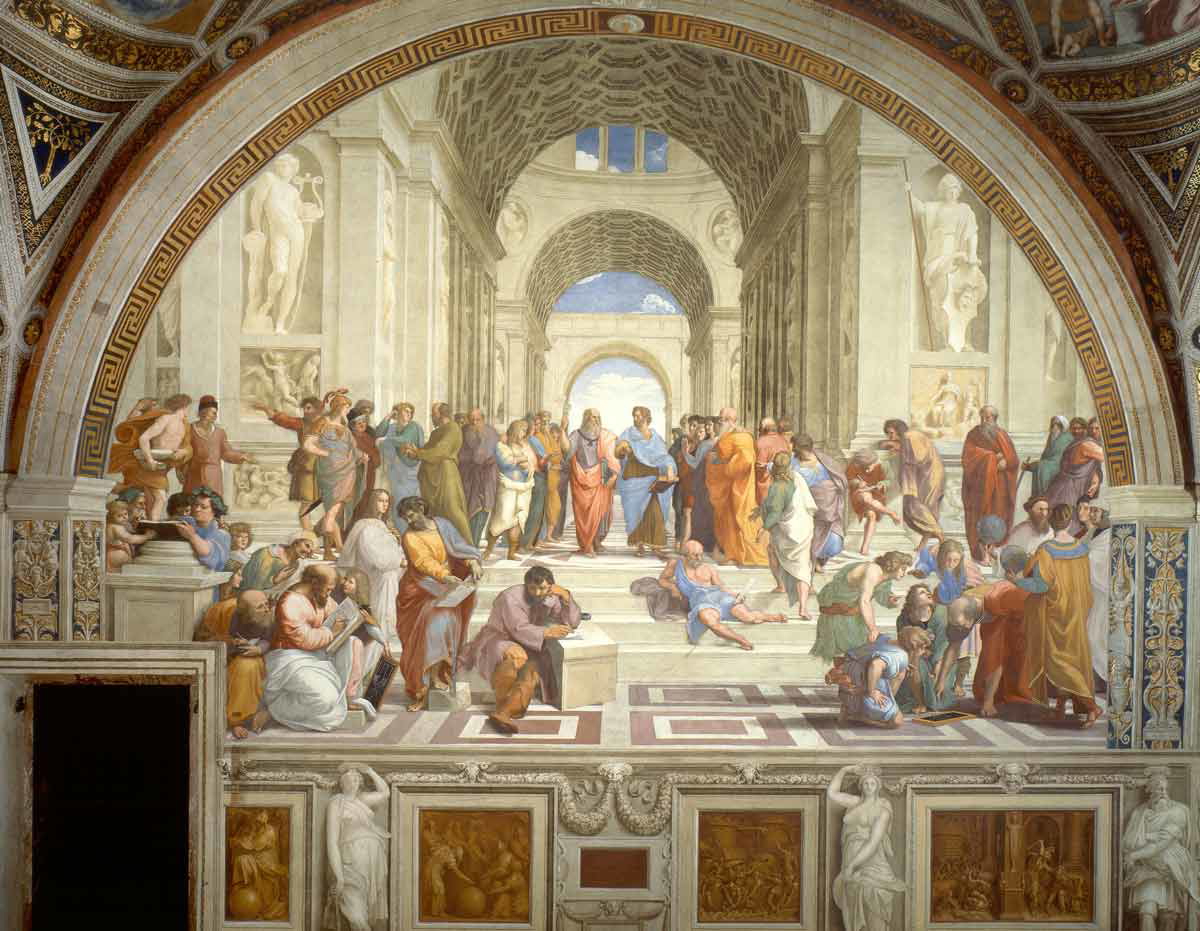
Athens then formed a coalition with several other city-states called the Delian League. Expanded across the Aegean by Pericles and generals such as Cimon, the Delian League was a vessel for Athenian power for almost 75 years. But during the Peloponnesian War, Athens was toppled by Sparta, which became Greece’s dominant city-state. The two continued to vie for power until the Macedonians brought Greece under their dominion. Greece would then become part of the Roman Empire, with aristocratic Romans traveling to Athens as an essential part of a well-rounded education.
6. Persepolis: Monument of Achaemenid Persia

At its height, the Achaemenid Persian Empire was an immense superpower that dominated much of Mesopotamia and Asia Minor. To suit such a powerful civilization, the Persian king Darius the Great began construction on a new capital at Persepolis in 518 BCE. While the vast Achaemenid administration continued to be run from other ancient cities such as Susa, Persepolis became the center of royal power. Darius constructed a new palace as well as a great apadana, an entrance hall used for hosting dignitaries. Bas-reliefs that still survive today depict visitors from across the empire arriving to pay homage to the King of Kings.
After Darius’ death, his successors added even more grand buildings to the complex. His son, Xerxes I, built his own palace, a treasury, and the famous Gate of All Nations. Around these impressive projects, fields spread out across the surrounding fertile land, while a bazaar sold goods gathered from across the empire.

But Persepolis’ splendor was not to last. When Alexander the Great invaded the Achaemenid Empire in 331 BCE, he defeated the Persian king Darius III. Alexander burned Persepolis to the ground, allegedly giving the order to ransack the city while drunk. The Achaemenid Empire died in the flames engulfing its greatest city.
7. Alexandria: Alexander’s Shining Legacy
In 331 BCE, Alexander the Great invaded the Achaemenid Persian empire. After liberating Egypt, the young general founded a new city, Alexandria. He designed the plans for the city himself before leaving to continue his campaign. When Alexander died in 323 BCE, Egypt was claimed by Ptolemy, and he and his successors built up the new city as a new Hellenistic capital.
The new city flourished, becoming the largest city in the world. Ptolemy and his sons began construction on the Great Library of Alexandria, where hundreds of scholars collected knowledge from across the known world. Alexandria became a haven for scholars, and great minds like Archimedes, Euclid, and Heron are believed to have studied there. This jewel among ancient cities was also home to the towering Lighthouse of Alexandria, considered to be one of the Seven Wonders of the Ancient World. The lighthouse was finished sometime around 250 BCE and stood for almost 1600 years. It may have been as tall as 140 meters, guiding ships safely into Alexandria’s harbor.

Alexandria continued as a prominent Mediterranean port until a series of Roman civil wars spread to Egypt. After the death of his rival Pompey, Julius Caesar declared martial law in Alexandria. He deposed Ptolemy XIII and installed Cleopatra on the throne. After Caesar was murdered in 44 BCE, the Roman general Mark Anthony ruled with Cleopatra as they opposed Caesar’s successor Octavian. Following the Battle of Actium, Anthony and Cleopatra committed suicide. Now ruling as Emperor Augustus, Octavian rebuilt Alexandria as the center of Roman power in Egypt.
8. Carthage: Trading Hub of the Mediterranean World

Before clashing with the Romans, Carthage was one of the wealthiest ancient cities in the Mediterranean and the center of a maritime trading empire. Phoenician sailors, likely from the powerful city-state of Tyre, founded the city in 814 BCE. Carthaginian traders spread across the seas, establishing colonies in Sicily, Spain, and the rest of the North African coast. Ebony, ivory, and gold flowed through Carthage from the African interior. Carthaginian merchants also traded in salt, spices, furs, and expensive purple Phoenician dyes made from murex seashells.
Carthage’s status as a center of trade was made possible by its twin harbors. The rectangular outer harbor was used strictly for trading vessels, protected by a long sea wall. The circular inner harbor housed Carthage’s mighty navy, with berths for 220 warships. The Byrsa hill, which held an immense citadel, overlooked the harbor. The city’s residential neighborhoods were spread out below.
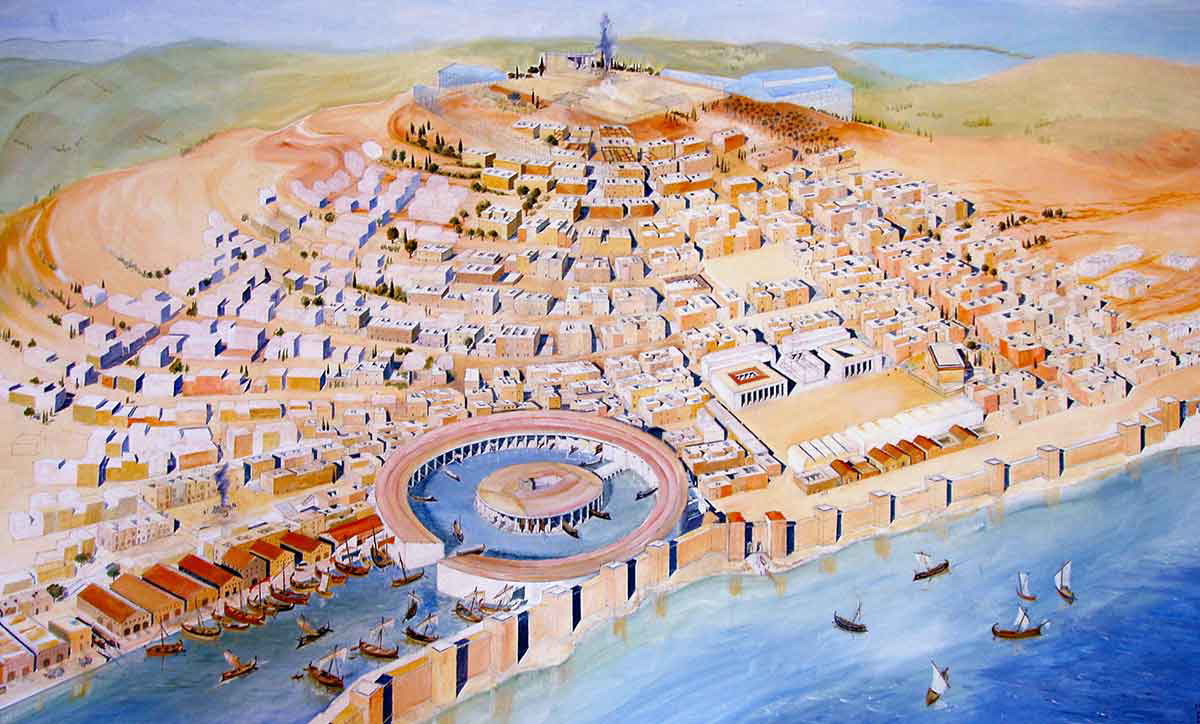
Carthage dominated the Mediterranean for centuries. But during the three Punic Wars, Carthage fought against the emerging might of Rome. After over a century of bitter fighting, the Romans besieged Carthage in 149 BCE. After two years, the Romans finally broke through. They ransacked the city and massacred or enslaved the surviving civilians. Carthage was utterly destroyed, and Rome finally became the dominant power in the Mediterranean.
9. Rome: The Greatest of all Ancient Cities

The seat of one of the greatest empires in history, Rome is arguably the most famous of all ancient cities. The city was founded in the 8th century BCE and gradually expanded across the Seven Hills of Rome. Initially ruled by kings, Rome became a republic in 509 BCE. Guided by the Senate, Rome expanded its territory for nearly 500 years. After a power struggle following Julius Caesar’s assassination in 44 BCE, the Republic was replaced by the Roman Empire under the first emperor Augustus. At its greatest extent in 117 CE< the Roman Empire encompassed most of Europe, North Africa, Asia Minor, and Mesopotamia.
The Roman Forum was the civic center of the city, containing the Senate house and administrative buildings. To honor Rome’s military conquests, great generals received spectacular triumphs that marched down the Sacra Via. Gladiatorial contests were held in the iconic Colosseum, while 150,000 spectators could enjoy chariot racing at the Circus Maximus. At its height, Rome had around a million inhabitants, but with deep inequality between rich and poor. While the wealthy lounged in palatial villas, the poor lived in sprawling slums.
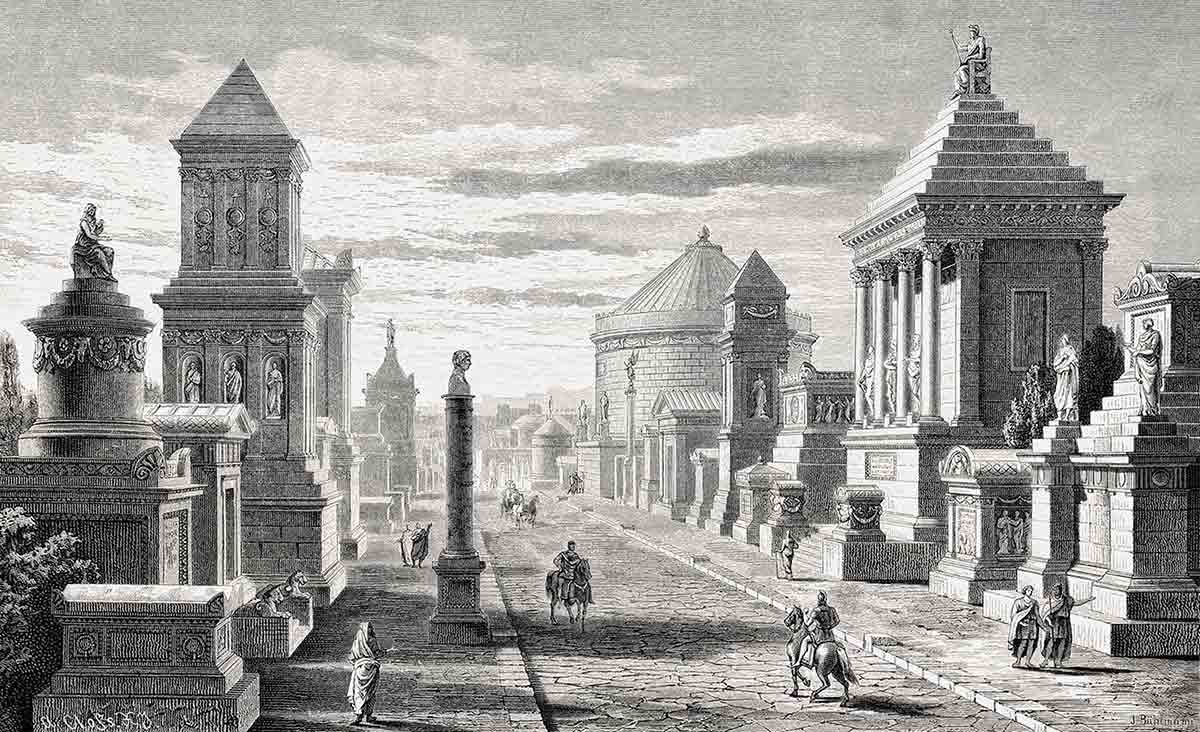
Throughout its long history, Rome endured civil wars, plagues, and other disasters. In 64 CE a great fire swept across Rome. Hundreds died, and ten of Rome’s 14 districts were destroyed. As its power declined in the 5th century CE, Rome was sacked by various barbarian groups and its population ebbed away. The Western Roman Empire collapsed in 476 CE.
10. Constantinople: New Rome

While in ancient times “all roads led to Rome,” it was not always the center of the Roman world. In the 4th century CE, it was displaced by a new eastern capital known as Constantinople as the seat of government for the Roman Empire. This new city quickly became a thriving city with more than half a million inhabitants in the 6th century CE.
When Constantine the Great established himself as the sole ruler of the Roman Empire in 324 CE, in a city he called New Rome, but which became known as Constantinople. He expanded an existing small town called Byzantium. He offered new residents free food to move to his new city, and he offers aristocrats positions of power to join his new Senate. Constantine transferred monuments and statues from every corner of the Empire to add splendor to his new settlement. It quickly became the undisputed capital of the empire and continued to thrive after the fall of Rome.

Many later emperors expanded and embellished the city. The Theodosian Walls and the Golden Gate were added in the 5th century CE, and the Hagia Sophia was constructed as the center of the rising Christian religion. Its natural harbor made it a trading hub, and its strong defenses, including naval “sea walls,” made the “Queen of Cities” all but impregnable. However, crusaders would sack the city during the Fourth Crusade, and it was then taken through siege by the Ottomans in 1453. But Constantinople remained important as the new capital of the Ottoman Empire, making it an important city in both ancient and modern times.
